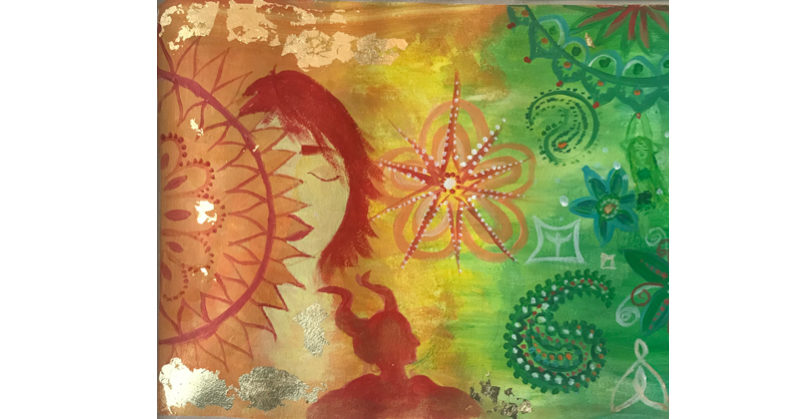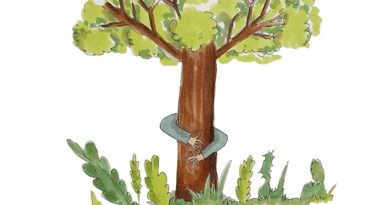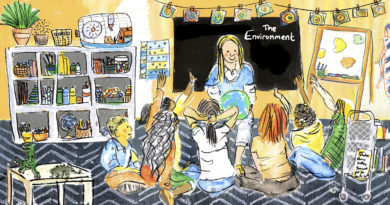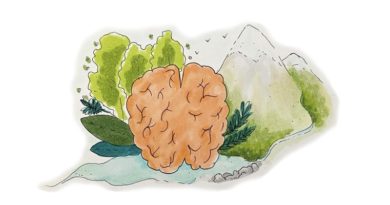But…Is Something Holding You Back?
It was May of 2012, and I was sitting in our living room together with my mum, who was visiting us from Sweden. I had reached my frustration breaking point and found myself yelling out, “What the heck am I supposed to do? I just want to find a way to combine work with two small kids at home.” I know: in these circumstances, that can be more easily said than done sometimes.
Here is an excerpt from the chorus that ran through my mind at that time:
I wish I could, but…
…I’m not a psychologist or a trained mental health professional.
…I don’t have time to educate myself.
…I have two small kids who need me.
…who am I to think that I can help others?
My list of “but”s grew longer by the day, and I was becoming increasingly frustrated with my life.
Anyway, after I had voiced my frustration, my mum looked at me, and then she looked behind me at our bookshelf. “What about checking if they offer courses?” she said, pointing at a red book sticking out of the shelf. The book she pointed at was The Grief Recovery Handbook. I had even forgotten that I had it!
“What about checking if they offer courses?” she said, pointing at a red book sticking out of the shelf. The book she pointed at was The Grief Recovery Handbook. I had even forgotten that I had it!
Back in 2003, I had seen an ad for this particular book in a magazine. The ad explained that the burnout symptoms I was struggling with at the time were also very common after going through a significant loss or major life change.
I had been experiencing insomnia, fatigue, tinnitus, and reduced short-term memory capacity after my father’s death to cancer in 2001. However, no doctor or therapist that I had seen for my symptoms had mentioned anything about the connection between losing a loved one and feeling this level of physical and mental exhaustion!
I ripped the ad out, went home, filled out the order coupon (because yes, this was mostly before the era of “ordering stuff on-line”), and mailed it the next day.
I received the book. I also started reading the first few chapters, but quickly realized that it was too emotional to go through on my own and ended up putting the book away.
As life would have it, I was not quite done with loss and grief. The book somehow knew this, and had therefore made sure it came with us when we moved to Zurich in 2005. I was still recovering after my emotional wipeout after losing my dad in 2001, when the world came crashing down again.
In December of 2006 we received a diagnosis that would finally change the course of my life forever. Our then-three-month-old baby girl Ingrid was diagnosed with a genetic muscle disease, Spinal Muscle Atrophy type 1. Our hearts were smashed into tiny pieces, and I had no idea how we would be able to survive this “too enormous to even grasp” grief as parents, as a couple, or as individuals.
She left us in May of 2007 just 4 days short of her eight-month birthday, and all we could do was find ways to adapt to our new reality as childless parents in the best way we knew how.
Almost nine years after buying the book, it peeked out of the bookshelf, as if begging me to notice it again. I grabbed it and rushed over to the computer (because luckily we had now entered the internet era), and started searching for the Grief Recovery Institute in Stockholm. BINGO! They did offer a weeklong certification course that would enable me to work through my own losses, and also give me the tools and techniques allowing me to help others through grief and loss – in the space of one week!
I could feel all of the “buts” on my list crumble, as I had now discovered a way to work around the obstacles of not having the credentials, the professional training, or the time to be away from my family. I took a bold decision, signed up for the course, and returned to Zurich as a certified Grief Recovery Specialist.
The years since 2012 have been a wild ride! My life experiences, a healthy portion of naiveté, and a very supportive husband have given me the possibility to face my “buts” list and find creative ways to reach my dreams. Contrary to what I had thought possible, I did manage to find a solution that allowed me be a home-based entrepreneur, a mum who can indeed juggle the Swiss school system while pursuing a professional, highly satisfying career.
Even though it has been, and continues to be, challenging in many different ways, my decision to step out of the corporate world, challenge my “buts” list, and follow my dreams has been life-changing both for me as a person and for our family.
Now over to you, dear reader. I want to challenge you to write your own “buts” list. It doesn’t have to be about career only; it can also be about the desire to learn a new skill, a language, or to keep in touch with friends and family. It’s your list, you decide.
- Start by writing “I wish I could…(insert your dream), but…(insert your reason for not doing it)”. Commit to list at least 5 wishes.
- Read what you have written out loud, and ask yourself how you would feel at the end of your life if you didn’t pursue that wish?
- Two things can happen here; either you say to yourself, “Actually, I thought it was more important, now I see that I can let go of this wish”; or, “I absolutely can’t bear the thought of NOT accomplishing this”; in which case you move on to step 4.
- Start brainstorming how you could work around your “buts” in order to fulfill your wishes. Maybe ask a friend to brainstorm with you – it’s more fun!
Good luck, and go for your dreams!
By Karin Andersson Hagelin
Karin Andersson Hagelin is a certified Grief Recovery Specialist® and EFT Tapping practitioner, running her coaching practice in Zürich and online. She is of Swedish origin but has been living in Zurich since 2005. To find out more, follow her page Karin Andersson Hagelin – Life Crisis Coach on Facebook or visit her website www.hagelingriefrecovery.com.
Illustration by Masha Ellis and her daughter*
Masha works as a product manager in the finance industry during the day and dedicates her spare time to art, cooking and her traditional nutrition blog. She is Australian with Ukranian roots and now lives near Lake Zurich with her little girl. To find out more, follow her on Facebook or visit her blog.
*Masha’s talented eight-year-old daughter collaborated with her mum on this delightful illustration.




